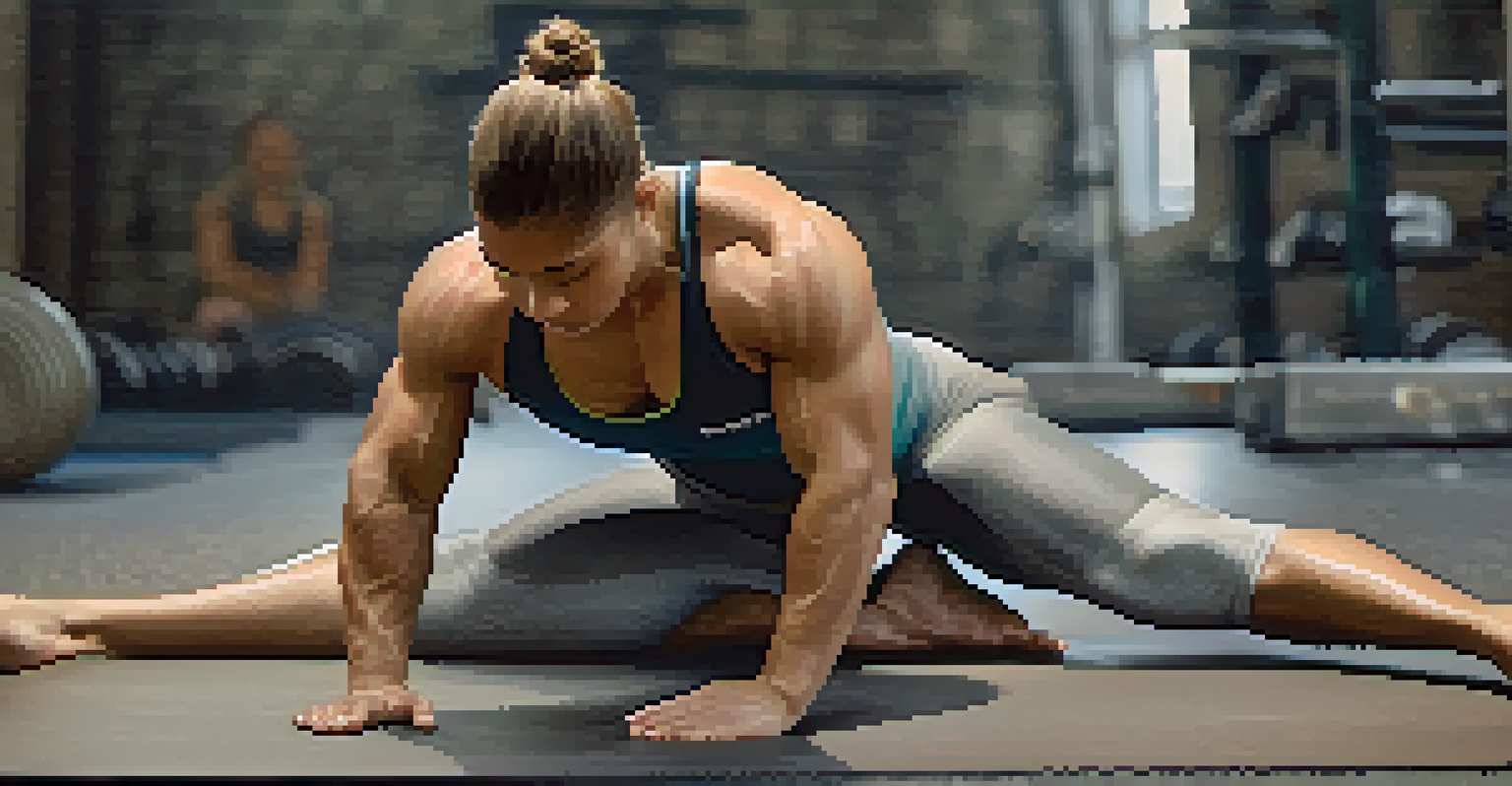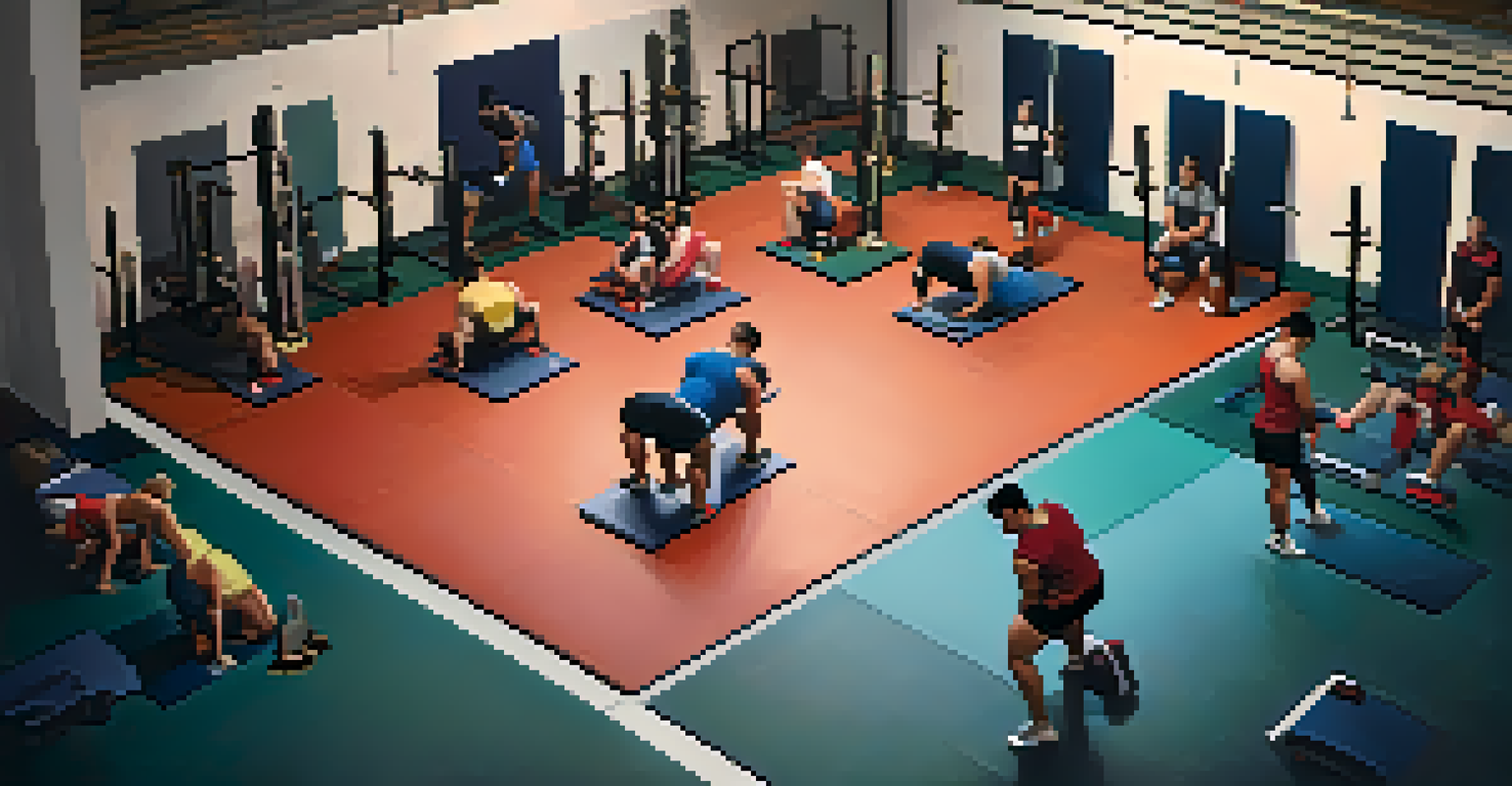Understanding Mobility Work for Improved Powerlifting Technique

What is Mobility Work and Why It Matters
Mobility work involves exercises that enhance the range of motion in your joints and muscles. It's essential for athletes, especially powerlifters, as it can directly impact lifting performance and injury prevention. By focusing on mobility, you can improve your body’s flexibility and stability, leading to better lifting mechanics.
Mobility is the key to unlocking your body's potential and achieving greater performance.
Imagine trying to lift a heavy weight with stiff joints; it’s like trying to drive a car with flat tires. The lack of mobility can hinder your ability to perform lifts safely and effectively. Integrating mobility work into your routine allows for smoother movements and helps you achieve optimal positioning during lifts.
Incorporating mobility exercises not only prepares your body for lifting but also aids in recovery. The more mobile you are, the less likely you are to experience muscle tightness and soreness, which can be detrimental to your training progress.
Key Benefits of Mobility Work for Powerlifters
The benefits of mobility work extend far beyond just flexibility. For powerlifters, improved mobility can lead to enhanced squat depth, better bench press alignment, and a more stable deadlift position. These factors all contribute to lifting heavier weights more safely and efficiently.

Imagine being able to squat deeper without discomfort or excessive strain; this is the result of effective mobility training. Improved joint health and muscle function translate into better overall performance, allowing athletes to reach new personal records. It’s not just about lifting heavier; it’s about lifting smarter.
Mobility Work Enhances Lifting
Incorporating mobility exercises improves flexibility, stability, and lifting mechanics, which are crucial for powerlifters.
Moreover, mobility work can significantly reduce the risk of injuries. By ensuring that your body moves correctly through its full range of motion, you protect your joints and muscles from undue stress, leading to a longer, healthier lifting career.
Common Mobility Issues Faced by Powerlifters
Powerlifters often encounter specific mobility issues like tight hips, poor thoracic spine mobility, and shoulder restrictions. These limitations can compromise lifting technique and performance. For example, tight hip flexors can prevent you from achieving adequate squat depth, affecting your overall lift.
The body achieves what the mind believes, but flexibility and mobility are crucial to making those beliefs reality.
Understanding these common issues is the first step in addressing them. Many lifters may not realize that their inability to perform a lift correctly is tied to these mobility restrictions. By identifying and targeting these areas, you can significantly improve your lifting technique.
Additionally, addressing these mobility constraints can enhance your confidence under the bar. When you know your body can move freely and efficiently, you're more likely to push your limits and achieve your goals.
Effective Mobility Exercises for Powerlifting
Incorporating specific mobility exercises into your routine can make a world of difference. Some effective exercises include hip openers like the pigeon stretch, thoracic spine rotations, and banded shoulder stretches. These movements help increase flexibility and joint stability, which are crucial for powerlifting.
For instance, the pigeon stretch not only targets tight hips but also promotes better squat mechanics. Similarly, thoracic spine rotations improve your upper body mobility, which is vital for a strong bench press. These exercises can be easily integrated into your warm-up or cool-down routines.
Target Common Mobility Issues
Addressing specific mobility limitations like tight hips and poor thoracic spine mobility can enhance lifting technique and confidence.
The key is consistency; just like with lifting, regular mobility work yields the best results over time. Aim to dedicate a few minutes before and after your workouts to these exercises, and you’ll likely notice improvements in your lifts and overall movement quality.
How to Create a Mobility Routine for Powerlifting
Creating a personalized mobility routine is essential for targeting your specific needs as a powerlifter. Start by assessing your mobility limitations and identifying which areas require the most attention. This assessment can be done through simple movement screenings or consulting with a coach.
Once you have identified your weak points, select exercises that will address these issues. Include a mix of dynamic stretches for warm-ups and static stretches for cooldowns. For example, if you struggle with squat depth, prioritize hip-opening exercises in your routine.
Remember to keep it simple and manageable. A focused 10-15 minute mobility session can be incredibly effective, especially if you're consistent with it. Over time, you’ll likely see improvements in your lifting technique and overall performance.
Integrating Mobility Work into Your Training Schedule
Integrating mobility work into your training schedule doesn’t have to be daunting. Start by dedicating time at the beginning or end of each workout session to focus on mobility exercises. This approach ensures that mobility becomes a regular part of your routine rather than an afterthought.
You might also consider dedicating specific days solely to mobility work. For example, on days when you’re not lifting heavy, you could spend more time focusing on flexibility and joint health. This practice not only aids recovery but also reinforces good movement patterns.
Create a Personalized Routine
Establishing a focused mobility routine tailored to your needs can lead to significant improvements in performance and recovery.
Additionally, keep in mind that mobility work can be performed anywhere. Whether you’re at the gym or at home, a few minutes of stretching and mobility exercises can fit into your day, making it easier to stay consistent.
The Role of Recovery in Mobility and Powerlifting
Recovery plays a crucial role in both mobility and powerlifting performance. Adequate recovery allows your muscles and joints to heal and adapt, which is essential when performing high-intensity lifts. Mobility work can significantly enhance your recovery by reducing muscle tightness and promoting circulation.
Think of your body as a car; just as you wouldn't drive it hard without regular maintenance, you shouldn't push your body without adequate recovery. Incorporating active recovery techniques, including mobility work, can keep your body in optimal condition, ready for your next lifting session.

Additionally, consider complementing your mobility routine with other recovery modalities like foam rolling or massage. These techniques can further enhance your mobility and overall performance, ensuring that you’re always ready to lift your best.